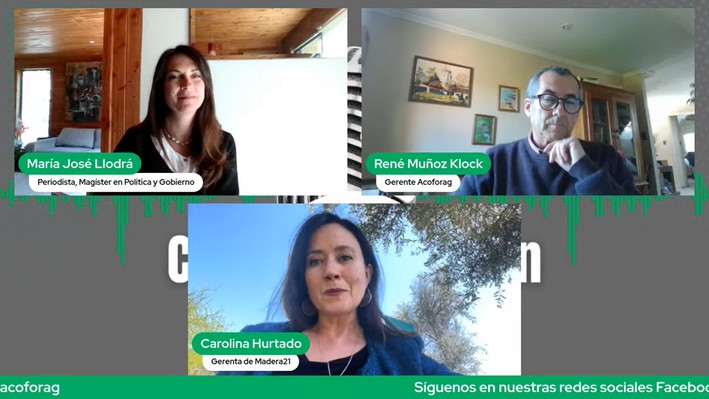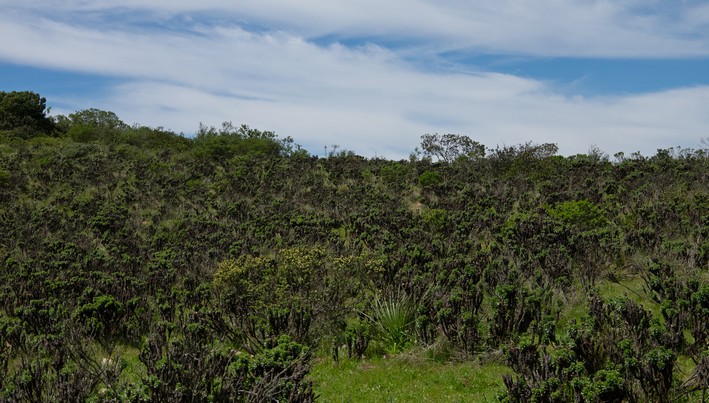INIA Aims to Revolutionize Natural Control of Agricultural and Forest Pests Through Chemical Ecology
The specialized laboratory at INIA Quilamapu develops pest control methods based on natural aromatic compounds that attract or repel insects, reducing their impact on agricultural and forest crops without adverse environmental effects.
In response to the ongoing challenge of mitigating pest insect damage in agricultural and forest crops, researchers at INIA Quilamapu have spent over a decade identifying aromas produced by both insects and plant species, analyzing the interactions between them.
This emerging scientific discipline is gaining ground in Chile's biological pest control field, centered at the exclusive Chemical Ecology Laboratory of INIA in Chillán. There, a team of researchers led by Ricardo Ceballos is developing cutting-edge methods based on studying chemical interactions between plants and insects, aiming to find environmentally safe and highly specific attractants or repellents to counteract pests.
"Chemical ecology allows us to control phytophagous insects (plant-eating pests) in a more natural and effective way than traditional methods," explained Ricardo Ceballos, a Doctor in Natural Resource Sciences with 18 years of experience in this field. "Unlike insecticides, which must be applied directly onto the insect or ingested by it, chemical ecology modifies insect behavior through chemical signals, tricking them into perceiving an environment that doesn’t actually exist." He added that this approach is one of the most sophisticated strategies in pest management.
The foundation of this method lies in natural aromas emitted by plants and insects, known as semiochemicals, which facilitate communication between them. The scientist clarified that these molecules enable the development of non-toxic pest monitoring and control methods, offering the advantage of being environmentally safe and highly specific. "This means that, unlike pesticides, semiochemicals exclusively target one insect species (the intended pest) without harming other organisms or the environment."
Pheromones and Other Semiochemicals
The Chemical Ecology Laboratory at INIA Quilamapu primarily focuses on pests affecting hard-to-manage agricultural and forest crops, such as those developing inside roots or plant stems. Ricardo Ceballos explained that these insects are shielded within the plant structure, making them unreachable by traditional control methods like insecticides.
Currently, researchers are identifying pheromones—compounds that attract adult insects during mating periods—of certain pest species to trap and reduce their populations. "This process requires significant time and resource investment," emphasized Ceballos, adding that "it can take years to identify the pheromone and develop the right means for field application."
Beyond pheromones, the lab is also investigating other attractants and repellents for different insect life stages, such as larvae, using plant extracts and essential oils. This approach will diversify available pest control tools, expanding the scope of chemical ecology-based methods.
Chemical-Residue-Free Pest Control
Amid growing demand for chemical-residue-free agricultural products, advances in chemical ecology offer solutions aligned with consumer and producer interests. Ricardo Ceballos noted, "Chemical ecology can create environmentally accepted, safe, and species-specific pest management methods, contributing to healthier and safer food production."
Currently, the researcher shared that they are working on several initiatives, such as controlling the grapevine borer (Naupactus xanthographus), the brown fruit bug (Leptoglossus chilensis), and the apple twig borer (Callisphyris apicicornis), a native insect that has found attractive hosts in berry orchards like blueberries, causing severe root and stem damage characterized by extensive tunneling and branch dieback, ultimately killing the plants. Recent efforts have focused on setting traps in commercial blueberry orchards to evaluate different attractants. In the coming seasons, sufficient data will be gathered to develop a targeted product to control this concerning pest, which reduces fruit production.










